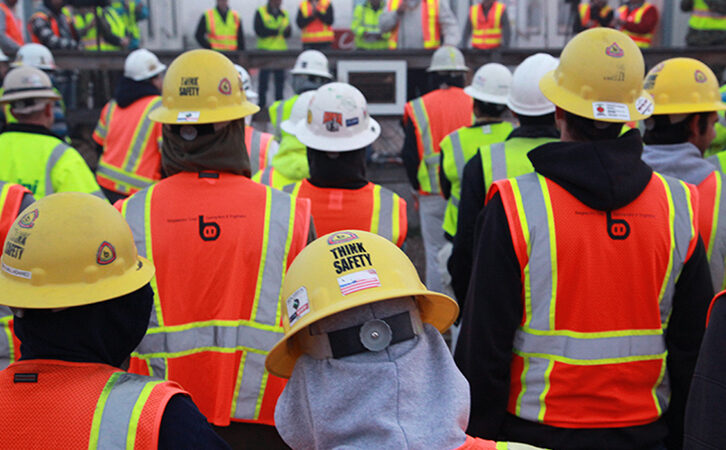Deadline Looms for OSHA as Joint Employer Standard Remains a Source of Controversy
11/03/2016

As part of the agency’s Temporary Worker Initiative, OSHA implemented its joint employer standard to more clearly establish workplace safety and training requirements for businesses who employ temporary workers, and the staffing agencies and contractors who provide them.
One year ago, OSHA released a controversial draft guidance document aimed at expanding the scope of the joint employer standard to include a review of the franchisor/franchisee relationship when determining liability in the event of workplace safety and health violations.
In the year since its release, the draft guidance document has drawn the ire of House Education and the Workforce Committee Chairman John Kline (R-MN), and Workforce Protections Subcommittee Chairman Tim Walberg (R-MI). The committees have repeatedly petitioned the Department of Labor to release a supposed 3,300 pages of information related to the proposed standard, yet received little response. DOL contends that the privacy of individuals named in the documents has been the primary reason for not releasing them as of yet, but has proposed issuing redacted versions of these documents in the near future. The committees have agreed to this compromise, but proposed action to compel DOL to release the documents if not received by November 4, 2016.
The draft guidance document lays out a long list of questions and criteria intended to determine the degree of control a corporate franchisor exerts over the operations and procedures in place at its individual franchises. Some examples of these questions include:
- Is corporate involved in decisions regarding store layout, store hours, staffing requirements, number of employees per shift, positions of employees, the number of managers, responsibilities of managers or job descriptions?
- Does corporate provide information/policies about training employees?
- Does corporate set any standards for safety training?
The answers to these questions and many others would presumably serve as an indicator of the level of liability the franchisor may bear in the event of an occupational health and safety violation that occurs as a result of corporate policies. Such interpretation of the joint employer standard could have profound consequences for corporate franchisors, potentially making them jointly and severally liable for violations that occur at their franchises.
Within the past few years, OSHA has demonstrated an active commitment to ensuring the safety of temporary workers. OSHA has successfully applied and enforced a joint employer standard in other types of multi-employer workplaces, including those in which multiple contractors and/or sub-contractors work within a single jobsite, as is common in the construction industry, as well as in the case of temporary employees provided to a host employer through a staffing agency. Recognizing that these types of employer relationships have the significant potential to result in a lack of adequate training regarding workplace hazards, OSHA has firmly established that both staffing agencies and host employers are jointly responsible for providing the required workplace safety training, and maintaining a safe work environment for all employees.
OSHA emphasizes that the key to establishing both the host employer’s and staffing agency's responsibilities lies in effective communication. Each employer should clearly define its responsibilities with regard to employee training and safety within the language of the employment contract, in order to eliminate confusion and prevent gaps in training and hazard prevention. OSHA also notes that staffing agencies have a duty to determine what hazards exist within the host employer’s workplace prior to assignment, and should work closely with host employers to remedy any unaddressed hazards and provide sufficient training.
While the existing guidelines and standards surrounding temporary worker safety have received widespread support for their implementation, the content of the draft guidance document, in which OSHA attempts to assess liability to franchisors and franchisees in the event of violations, remains controversial. The draft states, “As a general matter, two entities will be determined to be joint employers when they share or codetermine those matters governing the essential terms and conditions of employment and the putative joint employer meaningfully affects the matters relating to the employment relationship such as hiring, firing, discipline, supervision and direction.”
OSHA continues to reaffirm its commitment to temporary worker safety. This week, the agency announced it has renewed its alliance with the American Staffing Association. Over the next five years, the partnership will pursue the goals of providing education and training to staffing agencies, host employers and workers regarding their rights under the OSH Act, and facilitate communication between employers to ensure temporary worker safety. Assistant Secretary of Labor for Occupational Safety and Health Dr. David Michaels stated, "Through our continued alliance with the ASA, we will increase outreach to staffing agencies and host employers and provide information and education that is essential to protecting temporary workers."
Let VelocityEHS Help
The VelocityEHS Training Management solution offers a single, easy-to-use software system that allows you to plan, schedule, deliver and document your safety training programs, no matter whether you’re a staffing agency, host employer, contractor, or any employer type. You can quickly and clearly track employee training completion to demonstrate that employees have the workplace training they require to work safely and stay in compliance with OSHA training standards.






